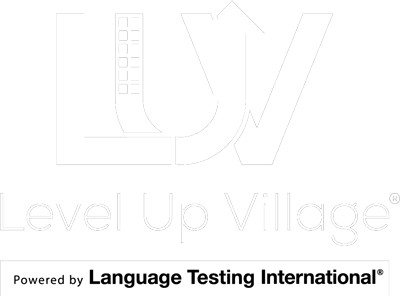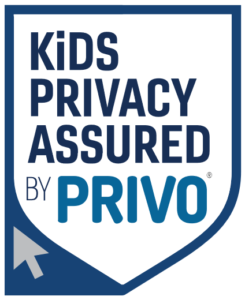“Ambassadors Exchanges,” the next cohort for Level Up Village’s virtual exchanges, have rolled out! And, while we’ve talked about pupils as ambassadors of their culture before on this blog, now that your Spanish students are being explicitly called to this role, more than ever we want, through this experience, to embrace the power of cultural exchange to globally broaden horizons and build bridges between young minds. The Level Up Village Ambassadors Exchanges is more than just a language program; it’s a journey into a new culture, a new way of thinking, and a new set of friendships.
Preparing your students to take on the role of “ambassadors” for their community requires a thoughtful approach, focusing on cultural understanding, language skills, and personal growth. You also don’t want to freak them out unnecessarily with the undue pressure of being, for many kids abroad, the first contact or representative from their part of the world. If I was going to run one of these exchanges, I know I would want to not only have a candid conversation with my class, but I’d also want to have frequent check-ins throughout the process. So, I hope this blog post guides you through the key topics I think I would cover in preparation for the exchange, strategies to ease your students’ anxiety, and engaging activities to ensure your students are ready and excited to represent their community.
Cultural Awareness and Sensitivity
- Understanding the Culture: Make sure you’ve introduced (or plan to introduce) your students to the customs, traditions, and social norms of the country with which they’ll be paired. You can also speak to your Level Up Village rep and learn about what countries will be participating, and prepare a holistic lesson ahead of time covering these parts of the world so that in the case that you’re paired with more than one school, you’ve got your cultural bases covered! And, as always, discuss the importance of respect and open-mindedness in understanding differences: it’ll go a long way!
- Role-playing Activities: One way to take the edge off is to organize role-playing sessions where students practice interacting in culturally diverse scenarios, helping them to develop empathy and adaptability. I know this sounds kind of hokey, but even if the students have trouble taking it seriously, they can get a lot of their silliness out ahead of time, and you’ll be surprised how many of them will actually utilize good content from these scenarios in later interactions!
Language Proficiency
- Language Workshops: Now that your students are about to use their target language in a real scenario, it’s a great time to start conducting regular Spanish workshops focusing on conversational phrases, common expressions, and cultural idioms to ensure fluent and respectful communication. Solicit your students for phrases they think they’ll need, too, and start a class discussion on “most commonly used expressions.” I usually have one student make a quizlet or a shared document for the rest of the class because, usually, they all want to know a lot of the same idioms.
- Peer-to-Peer Practice Sessions: Pair students for regular practice sessions, encouraging them to converse, share stories, and exchange cultural insights in Spanish. I always do this before any speaking assignment, and it’s just a fantastic way to get the giggles out and start the kids’ engines.
Personal Development and Confidence Building
- Public Speaking Practice: I think a huge part of ambassadorship involves the ability to effectively conversate with conviction, not cockiness. One trend I’ve seen amongst some of the more “confident” pupils is an overdone tone that I can only liken to that of YouTubers and TikTok influencers, where it sounds like someone’s addressing the back of the room even in an intimate tête-à-tête. I find this timbre of speech kind of phony, but for many of them, it’s their only point of reference. So, to break this habit, organize activities that promote public speaking and effective communication, allowing students to gain confidence in expressing themselves in real-life settings where their volume and tenor match their setting.
- Feedback and Encouragement: Provide constructive feedback and celebrate small victories to boost confidence and encourage continuous improvement. I wouldn’t call attention to missteps or unnatural speech (after all, it’s doubly hard for your students to do all this in a foreign language!) but focus on what felt natural and affable.
Reducing Anxiety and Building Excitement:
- Meet and Greet Sessions: If at all possible (time zones permitting), you might be able to alleviate some of the anxiety by setting up a first meeting. Try and arrange informal sessions where students can meet and interact with their counterparts virtually, breaking the ice and building comfort. I usually save this until the end of the exchange, but trying to frontload the experience might help demystify some of the anticipation!
- Anxiety Management Workshops: Conduct workshops on anxiety management, teaching techniques such as deep breathing, positive visualization, and mindfulness. It might sound like overkill, but you’ll have no idea how many of your students are actually facing apprehension towards this moment, so why not get them in a peaceful state?
Activities Before and During the Exchange:
There are plenty of other small ventures you can bake into your curriculum to tie the exchange into your existing program, so it doesn’t feel like this separate, foreign element. We’ve already talked about a bunch, but here’s a quick review of the ideas that might help you get more mileage and build a sense of ambassadorship in your students:
- Cultural Exchange Projects: Before the exchange, students can work on projects showcasing their own culture, which they can present to their international peers.
- Interactive Language Games: Use language games and quizzes to make learning fun and engaging, ensuring students are comfortable with the language before the exchange.
- Regular Check-ins: During the exchange, schedule regular check-ins to discuss experiences, share feelings, and offer support, ensuring a safe and positive experience for everyone.
- Reflection Sessions: Post-exchange, organize sessions where students can share their experiences, learnings, and personal growth stories, fostering a sense of accomplishment and enlightenment.
Preparing your students to be ambassadors in the Level Up Village Exchange is an enriching process that goes beyond language proficiency; however, it might also be a daunting task for some of them—a task you want them to take seriously, but not to the point of anxiety! It’s about nurturing cultural sensitivity, building confidence, and creating a supportive environment where every student feels ready to explore, learn, and grow. By focusing on these preparation strategies and activities, you’re not just preparing your students for an exchange program—you are equipping them with skills and insights that will last a lifetime. Let’s embark on this transformative journey together, fostering a generation of open-minded, confident, and culturally aware ambassadors.




